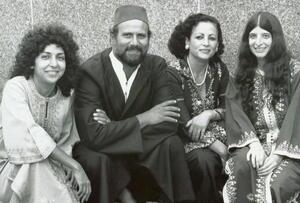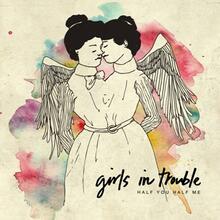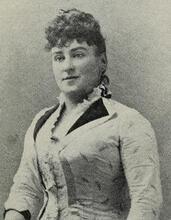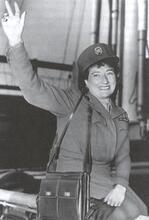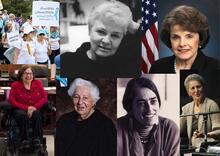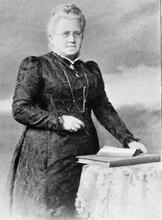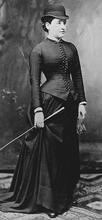Women and Sephardic Music
Ladino or Judeo-Spanish Sephardic songs are primarily a women’s repertoire. The two main traditions are of northern Morocco and the Eastern Mediterranean, primarily today’s Turkey, Greece, the Balkans. The repertoire includes romances or narrative ballads, life cycle songs, songs of the Jewish year and festival days, and general songs (kantikas); romances and life cycle songs are more often associated with women. The kantikas are generally the most recent items in the repertoire, often dating from the late nineteenth century on, and include many of the love songs and topical songs that have become the best-known among the general public.
Introduction
The term “Sephardic” is understood here in its basic sense of “from Sefarad,” that is, descended from and/or closely associated with Jews who were expelled from Spain and Portugal. It does not include other Jewish communities for whom the term “Sephardic” is often used in the sense of non-Jews of European origin and their descendants, including most of North and South American Jewry.Ashkenazi Jews. The language of the song repertoires and musical occasions discussed here is known by various names, of which the most common are “Judeo-Spanish,” “Ladino,” “Dzhudezmo,” “Dzhidio,” “Spaniol,” and, in Morocco, “khaketía.” Today, “Ladino” has become the most common term. “Music” here refers primarily to singing: the Ladino song repertoire does not have a separate instrumental tradition. Today few people remain who grew up singing these songs as part of daily life. Newer contexts of formal performance and teaching, including online events, are more common, and have fewer clearly delineated gender roles.
Instrumental accompaniment of songs in Ladino has mostly involved instruments popular in the local culture, especially string instruments and hand percussion. String instruments were traditionally played mostly by men, while women most often sang a capella and for weddings and other festive occasions accompanied themselves on frame drums or other hand percussion. Generally, women performed in domestic and community spheres, while men ensured the vitality of liturgical singing in and outside the synagogue and were often vocal and/or instrumental performers outside the community as well. These are not rules, but rather a description of how song performance generally worked in traditional diaspora settings, although exceptions existed.
While the lyrics of many of the older Ladino songs are shared across far-flung diaspora communities, melodies, rhythmic patterns, and singing styles generally fell into two large geographical and cultural areas: the Western Mediterranean (mostly northern Morocco) and the Eastern Mediterranean (including former Ottoman lands—today’s Turkey, Greece, Balkan countries, and Israel). The main genres, with some overlapping, have most typically been classified as follows: (1) romances or narrative ballads; (2) life cycle songs; (3) songs of the Jewish calendar year and other specifically Jewish contexts; (4) general songs, often love songs, topical songs, and parodies. The few, but increasing, newly composed songs with known composers mostly fit into this last category, which also tends to be the most recent, often known only from the mid-to-late nineteenth century on. They appear mostly in Eastern Mediterranean Sephardic communities; there are fewer in Morocco, where they are not nearly as well-known. Indeed, they are, for the most part, the songs best known and most often recorded and concertized today, frequently, though erroneously, presented as “medieval.” The vernacular Ladino repertoire has been primarily a women’s repertoire, especially romances and life cycle songs.
Romances
Although the Ladino term “romansa” tends to be confused with the idea of a “romantic” song, historically it refers to narrative ballads (Armistead). Romances are composed in assonant lines; the most common structure is a sixteen-syllable line divided into two eight-syllable hemistiches. The corpus of romances is the romancero. Women typically sang long romances while carrying out domestic tasks alone or in intimate settings of family and friends. Nursing and rocking a baby, putting a child to sleep, preparing a meal, sewing and mending were all activities that took a lot of time, whether alone or with other women, and long ballads with repetitive melodies constitute a time-honored way to pass this time in many cultures. Certain ballads were also used in wedding contexts, or as laments (known as endechas or oínas). Traditionally, romances were sung by one woman at a time, though group singing, especially of light-hearted ballads, did occur. They were rarely sung with instrumental accompaniment, probably because the women who generally sang them had their hands occupied with various tasks. Men often knew romance melodies and parts of the words from hearing them as small children, and they frequently adapted these melodies to Hebrew texts in liturgical or para-liturgical singing (Elbaz).
In northern Morocco, teenage girls not yet married often took turns singing romances as they sat on a swing put up in the home’s inner courtyard in the early spring. For this reason, Moroccan Sephardic women often classified romances according to whether or not they were “de columpio” (or “de matesha,” using a local Arabic word), meaning the swing. The main criterion for this classification was how rhythmic the song’s melody was, not the content of the lyrics. The swing was for one girl at a time, and for taking turns a chant existed that mixed vocabulary in Moroccan Arabic and Spanish. Jewish boys from the neighborhood would sometimes come by and offer to give the girl in the swing a push. Although most transmission of romances is oral, the generations of women who attended the schools of the Alliance Israélite Universelle, from the later nineteenth century on, often wrote down words to the ballads in notebooks, many of which have been preserved.
No one knows who first composed the words to narrative ballads, and around the time of the Expulsions, men in Spain sang them too, often as accompanied lute songs. Over the centuries, regardless of who first composed and sang them, Sephardic women made the corpus their own through processes of selection, adaptation, and use. In some cases, they have “de-christianized” certain ballads, for example substituting “an oath to my aged parents” for “an oath to the Virgin Mary.” Curiously, very few ballads mention Jews or Jewish life, while scenes from Catholic life and the presence of Muslims (“Moors”) are common. In Montreal in the 1980s, Moroccan Sephardic women sang ballads as they played bingo at the Sephardic Senior Citizens Club; they sometimes chatted about medieval protagonists as if they were characters in a well-known soap opera. Women portrayed in the romancero, as in other ballad repertoires, may be active or passive, heroines or victims, seductresses or seduced, altruistic or deadly.
Even when the lyrics and the narratives of romances can be traced to pre-Expulsion Spain, the melodies have changed over the centuries (Etzion and Weich-Shahak). The romance as a formal genre also does not appear in written form until the early fifteenth century, though many of the stories existed much earlier. For various reasons, the romance as part of women’s daily lives lasted longer in Morocco than in the Eastern Mediterranean, but for all intents and purposes it has now faded away in both.
Life cycle songs
Birth songs, wedding songs, and laments are the life cycle songs most indelibly associated with women; songs for a boy’s circumcision and Lit. "son of the commandment." A boy who has reached legal-religious maturity and is now obligated to fulfill the commandmentsbar mitzvah exist, but these life events are more associated with men singing in Hebrew. Of the women’s songs, wedding songs are the most numerous. The birth of a boy, as is the case in many cultures, was celebrated in ways that the birth of a girl was not, though a naming ceremony did exist for baby girls. A boy was going to be circumcised at eight days of age and part of the ritually adult community in thirteen years, and songs reflect this difference in community importance. One Moroccan song says “women who give birth to baby boys get fat hens and white bread to eat, and for those who have girls, (coarse) black bread and skinny sardines will do, and they can stay in the kitchen arguing with their neighbours.” Children’s songs were largely ignored until Weich-Shahak’s pioneering work (2001). Lament songs, often but not always, ballads, may mourn the death of a specific person or serve a community mourning situation, especially Tisha B’Av. Parodic versions of dirges also existed (Díaz-Más 2011: 95-95).
The traditional wedding was a multi-stage event, with songs associated with each part. The singing style was generally upbeat and accompanied by hand percussion, and it was performed as a series of songs, rather than as discrete units. In the Ottoman regions, the lead woman singer was known as the “cantadera”; she and/or other women were “tanyederas,” [female] musicians, referring to the tambourine, whose importance is reflected in the saying “No hay boda sin pandero” (there cannot be a wedding without a tambourine, Weich-Shahak 2007, 25). In Morocco, the tambourine was typically called the “sonazha” and often had the rim and jingles only, not the skin. Sephardic women in Salonica also used kitchen utensils as percussion instruments well into the twentieth century, a practice still found in Spanish and Portuguese villages. Rhythmic patterns generally followed local practice. Traditional performance practice has often been overlooked in staged performances, with a tendency to perform wedding songs in formalized, often solemn staged settings that do not convey their festive atmosphere.
Most of the wedding-related events up until the ceremony itself, the “Sheva Berakhot,” Seven Benedictions, took place among women. Some, such as the henna evening, were specific to Morocco, while others, such as the bride’s supervised immersion in the Ritual bathmikveh and the bride leaving her family and joining that of the groom, were common to Morocco and the Eastern Mediterranean regions. Songs sung among women often included lyrics whose allusions might be seen as too risqué to be sung in mixed company. Wedding song lyrics often reveal a mixture of spiritual, pragmatic, frivolous, and erotic aspects, the last-named acceptable in the context of the bride preparing for her husband. Some sample lyrics include “In my father’s house, I combed my hair…in my husband’s house I look in his wallet…how good is God who sends the morning” and “he’ll give me clothes and shoes; I’ll give him my pretty body to enjoy” (Cohen 1987). In some songs, the parallel structure recalls older Hispanic poetry.
Most of the life cycle songs are no longer part of daily life, in large part because the activities they were part of have largely disappeared. Particularly in the case of the several stages of a traditional wedding, the contexts for the songs no longer exist.
Songs for the Jewish calendar cycle
Songs for the Jewish calendar cycle, and other para-liturgical songs are often macaronic, in a mixture of Ladino and Hebrew, and often performed as “coplas” or “komplas,” or couplets, with a strophic structure. They are not so much a women’s repertoire as are life cycle songs and romances, but women do sing them. A minor genre, with very few examples, is the woman’s prayer in Ladino. Petrović describes an early twentieth-century innovation in Sarajevo, when a rabbi introduced a Shabbat morning women’s religious service (46).
Kantikas and miscellaneous songs
The Ladino songs best known to the general public through commercial recordings and online and live performances are mostly from a genre that, for lack of a better term, one might simply call “miscellaneous,” known in the former Ottoman regions as “kantikas” (Havassy). Most of these songs are relatively recent, from the mid-nineteenth century on, and quite often known only from the beginning of the twentieth. Those of Morocco, typically satirical early twentieth-century songs in khaketía, Moroccan Judeo-Spanish, are mostly known inside the community. The Ottoman region Ladino songs in this group include many love songs, as well as topical songs and parodies; some are about early days in Israel, and there is a small Holocaust repertoire. Some mention specific women’s names, and stereotyped romantic situations are often featured. Their music draws on a wide variety of sources and influences: local Turkish, Greek, and Balkan melodies and rhythmic patterns; popular songs from France, Spain, and Italy; tangos, foxtrots, and whatever else was appealing.
The earliest recordings of these songs, in Constantinople and other Ottoman cities at the beginning of the twentieth century, are mostly of male singers, who were often also Synagogue cantorhazzanim, synagogue cantors, and comfortable singing in Hebrew, Turkish, and Ladino. The recordings are invaluable but do not provide the sound of women singing Ladino songs in intimate feminine domestic settings, even though the songs were associated more with women in daily life. The earliest Moroccan recordings are from considerably later, starting in the 1950s; they are documentary recordings of women, usually singing alone and at home (see Bresler for a comprehensive discography). There are also a number of new compositions by known composers, of which the best-known are by Flory Jagoda [link to new entry on Flory Jagoda], often called the “nona,” or grand-mother, of Ladino songs, born in Bosnia-Hercegovina and resident in the United States since the end of World War II.
By the late twentieth century, Ladino songs, especially the relatively recent love songs, were an established part of world music, though typically seen as more “exotic” than Ashkenazi Jewish music and often mis-identified as “medieval.” Gender roles in song performance are generally not important, though there are probably more women singers specializing in the Ladino repertoire. Other roles include shaping the repertoire gradually over time through selection and adaptation, creating new songs, teaching, mentoring, carrying out research, and publishing collections and/or studies. Research and scholarship on the songs have shifted from a majority of male scholars to a majority of women scholars, often more able to establish a relationship of confidence with the women they are interviewing, who are often elderly (Cohen 1995). New roles are emerging of teaching, mentorship, community education, and, more recently, innovative online media, and the planning, presentation, and promotion of educational and community events, : frequently, but not always led by women. The main mode of transmission for some time has been through recordings, rather than from one generation of women to another within the family and community.
Armistead, Samuel G. Romancero judeo-español en el Archivo Menéndez Pidal. Madrid: Seminario Menéndez Pidal, 1978.
Bresler, Joel. Sephardic Music: A Century of Recordings. 2008-2012. https://www.sephardicmusic.org/
Cohen, Judith. “’Ya salió de la mar’: Judeo-Spanish Wedding Songs among Moroccan Jews in Canada.” In Women and Music in Cross-cultural Perspective, edited by Ellen Koskoff, 55-67. Westport, Connecticut: Greenwood Press, 1987.
Cohen, Judith. "Women's Role in Judeo-Spanish Song." Active Voices: Women in Jewish Culture, edited by Maurie Sacks, 182-2000. Champaign, IL: University of Illinois Press, 1995.
Diáz-Más, Paloma. “Sephardic Songs of Mourning and Dirges.” European Judaism 44/1 (2011): 84-97.
Elbaz, Vanessa Paloma. “Judeo--Spanish Melodies in the Liturgy of Tangier, Morocco Feminine Imprints in a Masculine Space.” In Musical Exodus: Jewish Musical Diasporas of Al-Andalus, edited by Ruth Davis, 25-43. New York: Rowman & Littlefield, 2015.
Etzion, Judith and Shoshana Weich-Shahak. “The Spanish and Sephardi Romances: Musical Links.” Ethnomusicology 32/2 (1988): 1-37.
Havassy, Rivka. “’Con el tiempo y progreso (with time and progress): The Sephardi cantigas at the dawn of the twentieth century.” European Judaism 44/1 (2011): 121-135.
Petrović, Ankica. “Sacred Sephardi Chants in Bosnia.” The World of Music 24/3 (1982): 35-51.
Weich-Shahak, Susana. RepertorioTradicional Infantil Sefardí: Retahilas, juegos,canciones y romances de tradición oral. Fundación Centro Etnográfico Joaquín Díaz. Madrid: Cultura Literaria, 2001.
Weich-Shahak, Susana. La boda sefardí: Música, texto y contexto. Madrid: Editorial Alpuerto, 2007.

